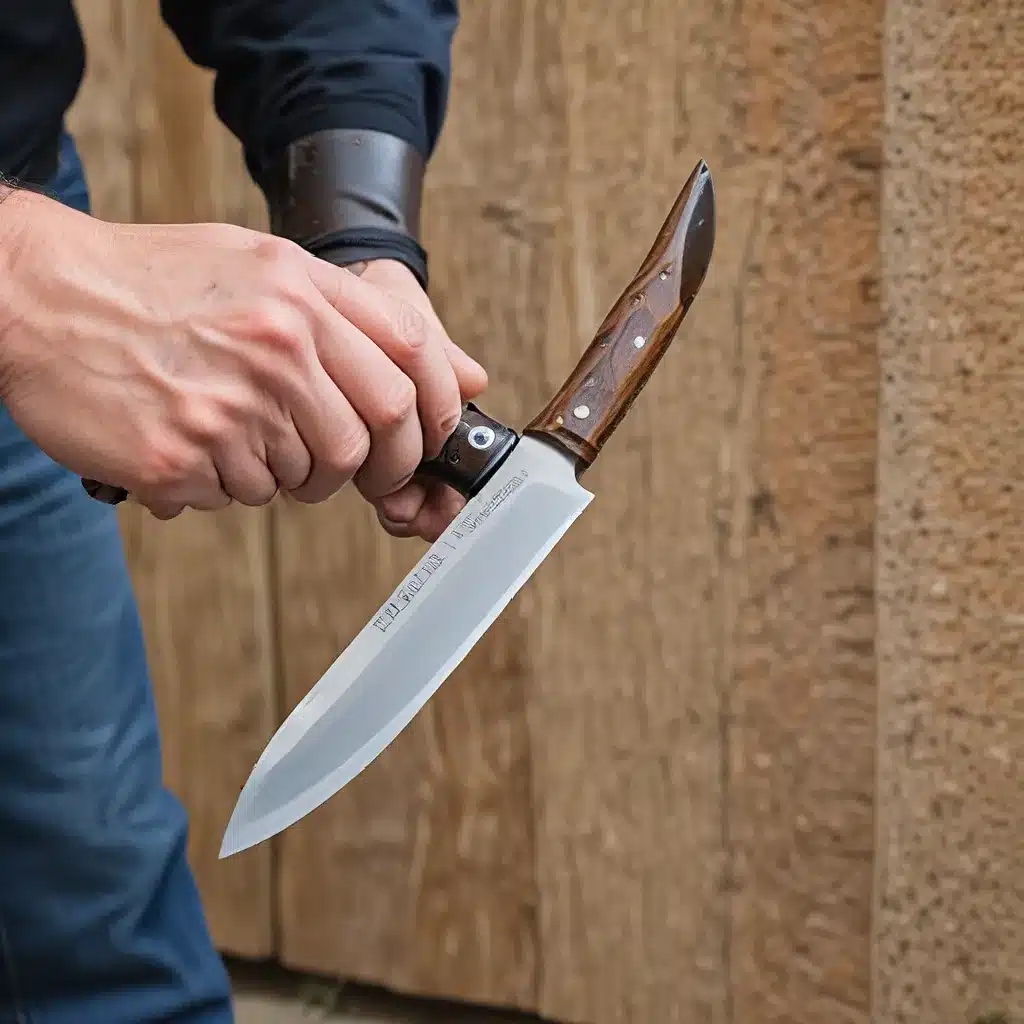
As a seasoned knife enthusiast, I can vividly recall the early days of my culinary journey. Gripping a blade with confidence and maneuvering it with precision was a constant challenge. Whether I was slicing through delicate vegetables or tackling tough meats, my knife handling skills often left much to be desired. But through trial, error, and a healthy dose of determination, I’ve learned a thing or two that I’m excited to share with you.
Mastering the Grip: Finding the Sweet Spot
One of the most common issues I faced was struggling to grip the blade firmly enough to maintain control. It’s a problem I’ve heard echoed by many aspiring home chefs and even professional cooks. The solution, as it turns out, lies in finding the perfect grip.
The pinch grip is often touted as the go-to technique for optimal control and dexterity. This involves placing your thumb and index finger on either side of the blade, just above the bolster or where the blade meets the handle. The remaining fingers then wrap around the handle, providing a secure and stable hold.
Experts recommend avoiding the temptation to grip the knife like a club, as this can lead to fatigue and a loss of precision. Instead, imagine you’re holding a delicate little bird in your hand – that gentle, yet firm touch is exactly what you’re aiming for.
Unlocking Blade Mastery: Developing Dexterity
Once you’ve nailed down the grip, the next step is to focus on blade control and dexterity. This is where the real magic happens, transforming your knife skills from novice to ninja-level.
As one fencing enthusiast shared, the key lies in training your index finger and thumb to be the primary drivers of your blade’s movements. These two digits should act as the control center, guiding the knife with lightning-fast precision.
But dexterity is more than just finger control – it’s about whole-hand coordination. By keeping your other fingers curled back and using your knuckles as a guide, you can achieve a level of finesse that will have your dinner guests in awe.
Overcoming Obstacles: Addressing Fatigue and Fit
Of course, no journey to knife mastery is without its challenges. One common obstacle I’ve encountered is forearm fatigue, where the muscles in my right arm would become tired and struggle to maintain control.
As the fencing enthusiast discovered, this could be a result of gripping too tightly or simply needing to build up the necessary strength and endurance. Incorporating targeted exercises, such as wrist curls and forearm strengthening routines, can help overcome this challenge.
Another potential issue is the fit of your knife handle. As mentioned in the Reddit post, if your fingers don’t quite reach the bell guard or the handle just doesn’t feel “right” in your hand, it may be time to consider a more personalized grip.
Putting It All Together: Precision, Control, and Confidence
Mastering knife handling is a journey, not a destination. It’s a continual process of refinement, experimentation, and building muscle memory. But once you’ve got the fundamentals down, the possibilities are endless.
Imagine effortlessly slicing through paper-thin tomatoes, dicing onions with surgical precision, or carving intricate garnishes that would make a culinary artist swoon. With a steady grip and impeccable dexterity, you’ll not only elevate your cooking game but also instill confidence in every task you take on.
And let’s not forget the safety aspect – a well-handled knife is a much safer knife. By maintaining control and minimizing the risk of slips or accidents, you can protect your digits and ensure a pleasant and efficient cooking experience.
So, whether you’re a seasoned chef or a culinary newcomer, I encourage you to embrace the journey of improving your knife handling skills. With a little practice and a growth mindset, you’ll be wielding that blade like a true master in no time. And who knows, you might just inspire others along the way to discover the joy of knives and the art of cooking.


